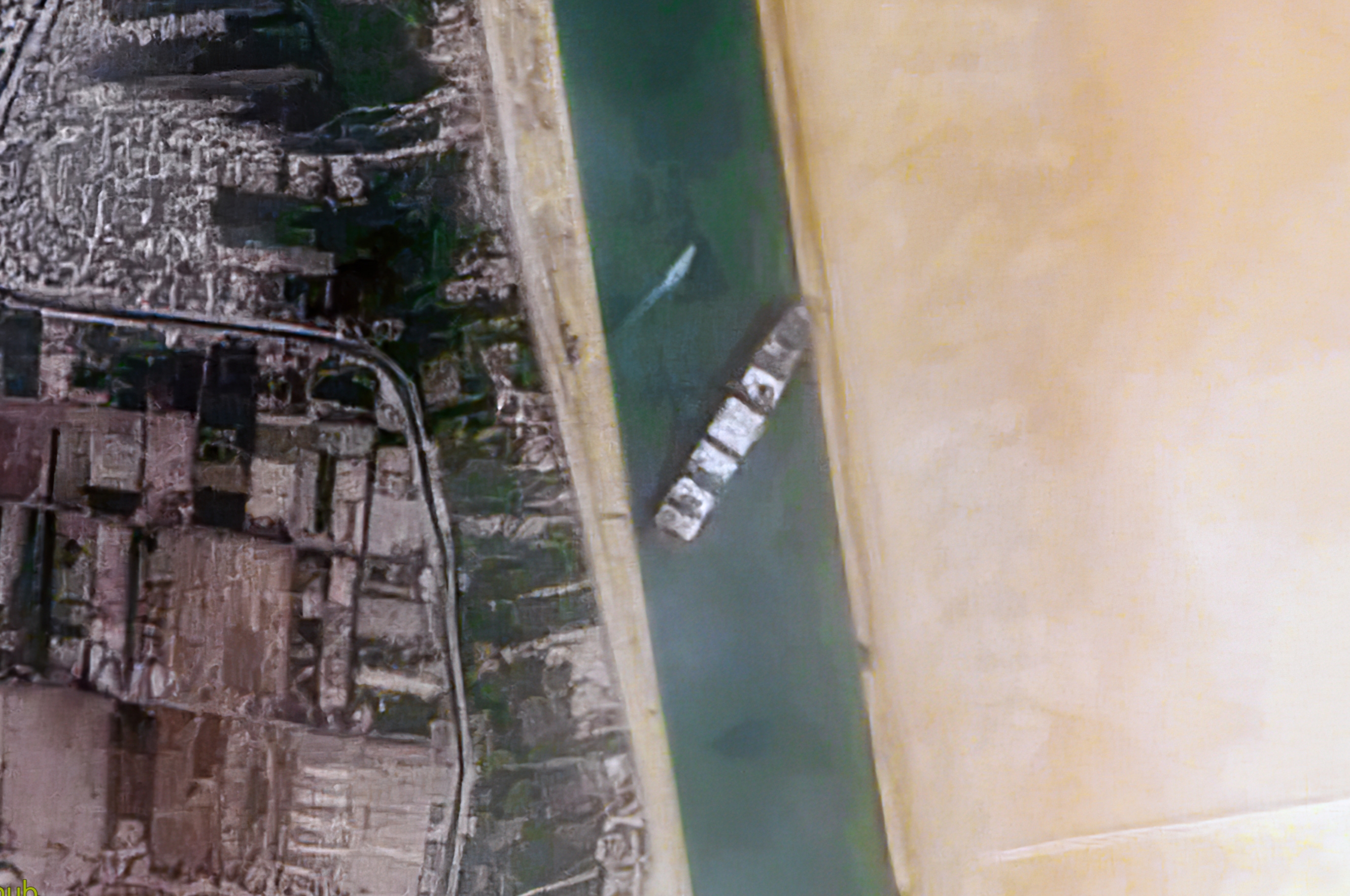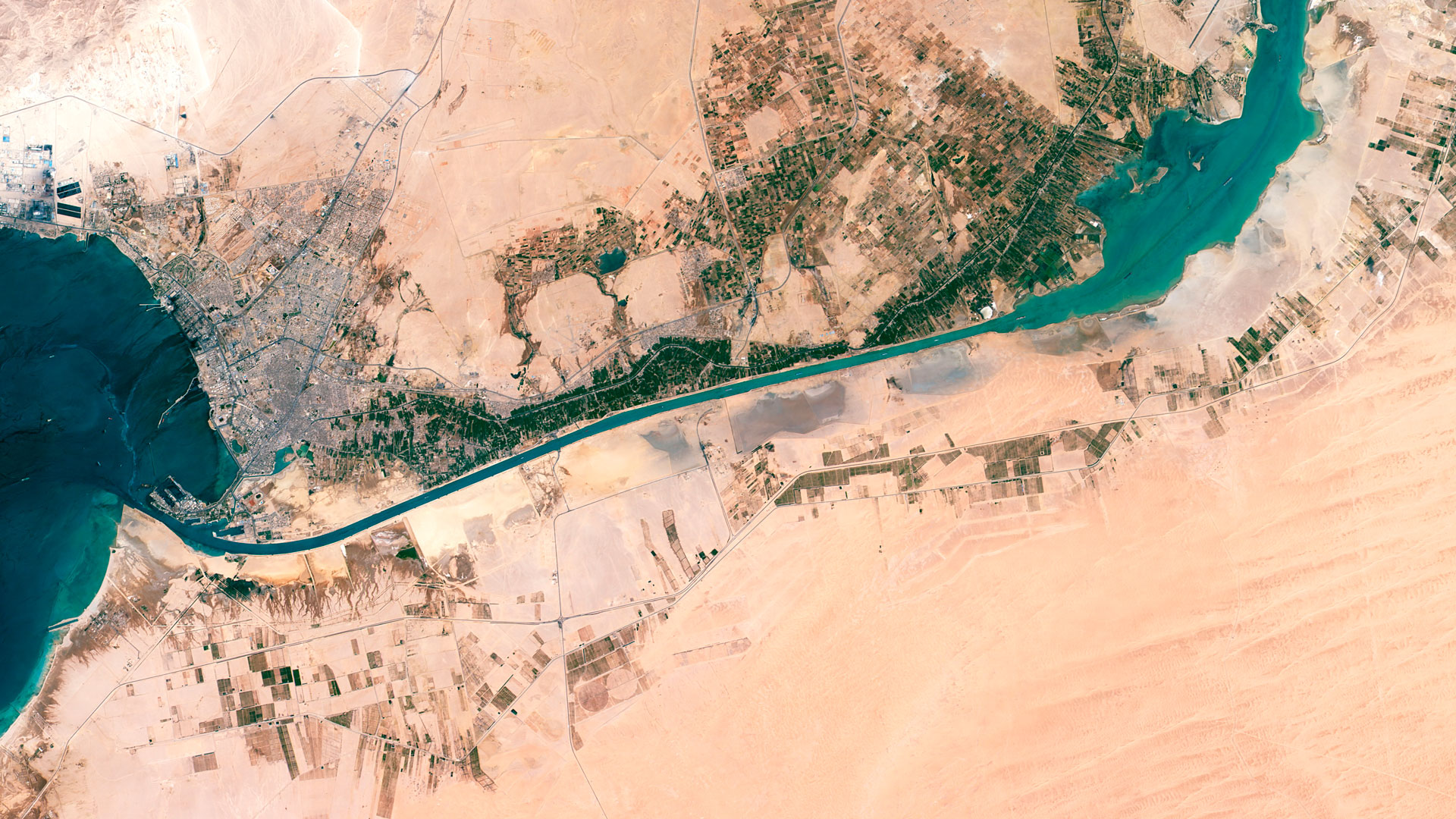
One ship 1,300 feet long (400 meters); 14 tug boats; 30,000 cubic meters of mud and sand cleared; 369 ships waiting in line behind the behemoth vessel: these are the elements that marked the reopening of the Suez Canal this week. When the Ever Given stopped traffic on 23 March, the Suez Canal Authority (SCA) estimated a $14 million revenue loss for each day of the blockage. Moreover, trade along the waterway that contributes 2% to Egypt’s GDP also stopped – costing $6.7 million per minute. (Russon 2021) Alianz insurer reported the Suez Canal March 2021 blockage cost between $6 billion and $10 billion.

Almost everything we touch has reached us, at some stage in the supply chain, via ship. Suez averages 106 container vessels and cruise ships per day. Trends in the container shipping industry reveal continuous pressure for size increase: since 1968, container ship capacity has increased 1,200%. (World Shipping Council, 2021) Why the pressure for bigger? One reason is because shipping is twice as energy efficient as rail and seven times more than vehicle. Shipping emits 3.1% of global CO2, but that percentage could rise as other industries decarbonize. The Energy Efficiency Design Index (EEDI) is a globally-binding design standard established by the International Maritime Organisation (IMO) to reduce climate damage caused by shipping: ships built from 2020-2024 will be required to improve energy efficiency by 15-20%, and by 30% after 2025. Many of those ships will transit the Suez Canal.

As container ships get bigger, canals will too. In 2015, Suez built a parallel waterway deepened by dredging one million cubic meters of sludge daily. Six companies did the work: Great Lakes Dredge and Dock Company (USA), Jan de Nul Group and Deme Group (Belgium), National Marine Dredging (UAE), Royal Boskalis Westminster and Van Oord (Netherlands). The Panama Canal, begun by Ferdinand de Lesseps but completed by the US, recently installed new locks on the Atlantic and Pacific sides that are 70 feet wider and 18 feet deeper than the originals. American ports like Baltimore, Charleston, Miami, Philadelphia, and Virginia have seen increased container traffic from the Panama expansion, according to the Supply Chain Management Program at MIT. The current US proposal “American Jobs Plan” allocates $42 billion for ports (air and sea) that may spur improvements.

Egypt’s famous waterway opened in 1869; 1.5 million people worked on the canal’s construction, evidence that infrastructure building creates jobs. Ferdinand de Lesseps, retired diplomat, visited his childhood friend now the khedive and viceroy of Egypt, in 1854 and gained concession to build the canal. Diplomacy remained a central value: the Suez contract Article VI states “tariffs of dues for passage…shall be always equal for all nations.” (Building the World, p. 193) To mark the inaugural opening of the Suez Canal, Giuseppe Verdi composed the opera Aida. Should the “American Jobs Plan,” aimed at rebuilding infrastructure, include funding for art?
Davidson, Frank P. and Kathleen Lusk Brooke. Building the World: Great Engineering Projects in History. Volume 1, Chapter 16, “The Suez Canal,” pages 187-204. Greenwood/ABC-CLIO, 2006. ISBN: 9780313333736
DC Velocity. “Has the Panama Canal expansion changed anything?” 20 December 2018. https://www.dcvelocity.com/articles/30335-has-the-panama-canal-expansion-changed-anything.
Edwards-May, David, and Li Denan. China’s Grand Canal: Mirror of Civilisation. Xanadu Publishing 2020. ISBN: 9781784591830.
Gooley, Toby. “Has the Panama Canal expansion changed anything?”
Inland Waterways International (IWI). https://inlandwaterwaysinternational.org/
Navigating a Changing Climate Partnership and World Association for Waterborne Transport Infrastructure. “Mitigation: Moving towards low carbon navigation infrastructure.” @NavClimate. https://navclimate.pianc.org
Russon, Mary-Ann. “The cost of the Suez Canal blockage.” 29 March 2021. BBC News. https://www.bbc.com/news/business-56559073
Street, Francesca. “What’s it’s really like steering the world’s biggest ships.” 29 March 2021. CNN.com. https://www.cnn.com/travel/article/steering-worlds-biggest-ships-suez-canal-cmd/index.html
Tankersley, Jim. “Biden Details $2 Trillion Plan to Rebuild Infrastructure and Reshape the Economy.” 31 March 2021. The New York Times.
Transport & Environment. “Shipping and Climate Change.” https://www.transportenvironment.org/what-we-do-/shipping-and-environment-shipping-and-climate-change
Verdi, Giuseppe. Aida. Performance by Pavarotti. LISTEN: https://www.youtube.com/watch?v=b8rsOzPzYr8
World Shipping Council. “Container Ship Design.” https://www.worldshipping.org/about-the-industry/liner-ships/container-ship-design.
Building the World Blog by Kathleen Lusk Brooke and Zoe G. Quinn is licensed under a Creative Commons Attribution-NonCommercial-NoDerivs 3.0 Unp
